| Marhamchurch - Another View |
There are plenty of websites out there which give you the historical background to Marhamchurch. Many say pretty much the same thing as the others. Some try to kid you that Marhamchurch was founded just because the Bude Canal passed that way. Most drone on about it being a pretty village on the outskirts of Bude and actually they are correct if lacking in detail, but if you dig around in cyberspace you eventually come up with something useful. I do not intend to regurgitate information gleaned from other sites and have tried to lend my own perspective. At the bottom of this page Iíve added some links to sites that give more than just how far the beach is and what the pub food is like. Check them out. Meanwhile Ö..
Heading south on the North Cornwall Coast road just past Bude, Marhamchurch appears to the left, up on the hill. It looks a little like one of those whitewashed hilltop villages of Provence or Andalucia, except that the vegetation is clearly of a more northerly climate.
By the time you see it youíll have missed the first turning off the A39 just after Kings Hill, the second comes up at Helebridge. All roads into and out of Marhamchurch are winding and narrow. The first time I visited I was driving a turbocharged beast of a car with interesting handling characteristics. Sandra, who knew the roads well, was having a laugh at my expense as I attempted to keep the vehicle within the confines of the narrow sunken lanes, having just charged across from Exeter on empty roads well after closing time. The brake pedal came in handy long before we hit the 30 limit. The lanes open out into the broad village square, or rather oblong, orientated east to west in the same direction as the church.
The Church of St Marwenne (hence the name Mar-ham-church) still dominates the village as it does from any more distant view. Wandering through on a warm summerís afternoon, often all you hear is the birds. At the east end of the main square the general store once had a steady stream of customers. It saved many a trip into Bude, stocking all sorts of useful items as well as newspapers, greetings cards and groceries. Regretfully, the Post Office cutbacks in 2009 made it unviable and it closed down. The good news is that the village community have opened a new shop on the other side of the square. No post office, but The Bullers pub and restaurant, which closed in 2012, has since reopened with new landlords. We wish both enterprises every success.
Although very similar to many villages in North Cornwall, Marhamchurch has a more cohesive feel than some others. Not so long ago the village had a distinctly agricultural flavour, but changes in EU policy left the farmers looking for alternative means of income. The farmyards have gradually in-filled with new housing, huddled in between the older properties. This influx has of course helped the local school and bus service survive so contributing to the future of the community. Gone are the days when herds of cows were driven through the village centre, thankfully reducing the regional methane output.
The newer houses are tucked away in side roads, so the nucleus of Marhamchurch has remained largely unchanged, the village square bordered by the traditional thatched or Cornish stone slate roofed properties that have stood for decades. It is in one of these that Sandra spent her formative years, climbing in and out of her bedroom window at the back with the aid of a ladder, to hang out with her friends in Bude rather than studying! Her dad was really pleased that she spent so many hours slaving away over her textbooks and didnít find out until years later!
If you are one for pedestrian activity, there are plenty of places to go for a stroll. We plan to add some pages of the less obvious and more interesting public footpaths, so for now Iíll keep it brief. Once you leave the village be prepared to dive into the nearest hedgerow at the sound of an approaching car. Horses tend to be a little more accommodating, but personally I wouldnít rely on it. Cyclists can always be intimidated as they are just as vulnerable as you are. Farm machinery knows itís own way about and doesnít need a driver. It canít really tell if humans are different from other livestock and assumes your place is back in the field and does it's best to herd you through the nearest gate. If itís dark, take a torch and keep it firmly on the road ahead at all times otherwise you will need to clean your shoes. In all other respects going for walks in this part of the world is a real joy. The banks either side of the lanes are filled with ferns; the tongue variety are especially attractive. Many species of birds and fields full of pretty sheep. Lovely.
Apart from the two roads that lead to the Atlantic Highway, another heads off towards Week St Mary. Week doesnít look far away as from Marhamchurch you can see the church on top of the hill. As the crow flies Ė and there quite a few of those about Ė itís not, but the road twists and turns and makes really heavy going of it, so donít be fooled into thinking itís a quick stroll. The other road out heads off to Bridgerule, again several miles away, but at the cross roads just up the hill on Hobbacott Lane you have the option to turn right, then right again and back to Marhamchurch (round the block, we call it), or turn left towards Cann Orchard and on to Stratton. This is the start of an interesting off-road excursion which is covered on another page about the Planekeeperís Path to the Hobbacott Incline Plane.
Quite a few years ago a chap called Thomas Box started an iron foundry at the bottom of the hill between Marhamchurch and Helebridge. A few years after that word reached Cornwall that trade unions had started making unreasonable demands on employers, so Mr Box built a row of six cottages for his workers to live in. When we acquired one of those cottages in the late 90ís the gardens were laid out in their original configuration, parallel to the row of cottages, with number 1ís land next to all six and number 6ís land furthest away at the end of the plot. These would have been allotments on which the workers grew their own vegetables. Under the guidance of our good friend Richard Rowles of Berkshire, Land Registry managed to reallocate the first three plots into a more normal configuration. Future occupants of the cottages will be blissfully unaware of this unless they stumble upon this web page. Behind our cottage and the one next door were slate roofed outbuildings in which the early occupants kept pigs. These had at sometime been converted into outside loos, and eventually we hooligans knocked them down. They looked awful and spoilt the view Ė honestly!
For some years we used to rent it out to holiday folk, and the irony is this. Without the trade unions demanding better conditions for the workers we wouldnít have holidays and therefore would not need holiday cottages.
We hope you enjoy this website and the collection of photos that grows in size year on year. We can see from the data on our site visitors that there is certainly plenty of interest in North Cornwall from not just the United Kingdom but from all over the world.
|
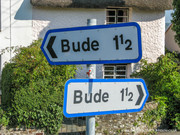
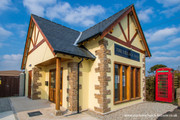
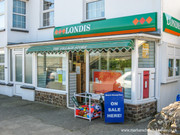
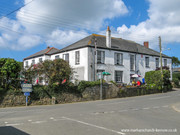
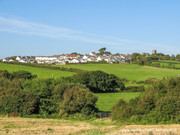
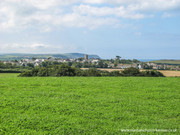
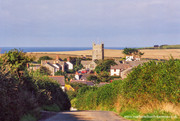
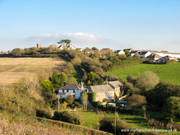
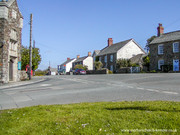
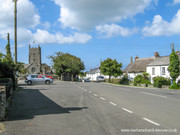
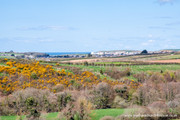
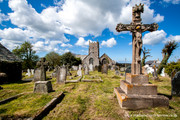
|






